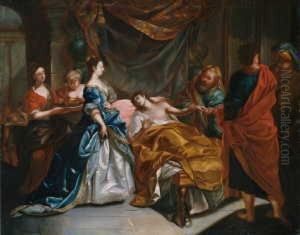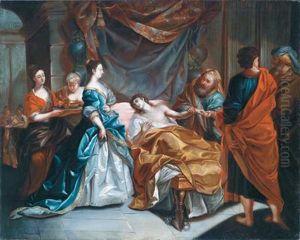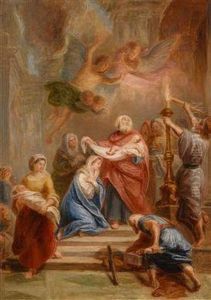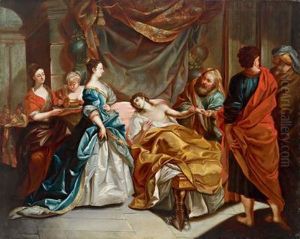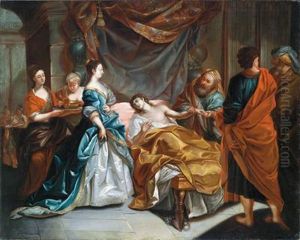Johann Anwander Paintings
Johann Anwander was a German painter born in 1725 in Memmingen, a town in Swabia, Bavaria. His artistic journey began as he apprenticed under Johann Heiss, a well-regarded artist of the time, which was a common practice for young artists to learn the craft through apprenticeships. Anwander developed his skills primarily in fresco and oil painting, and his work was heavily influenced by the Rococo style, which was popular in the 18th century.
During his career, Johann Anwander became known for his decorative wall and ceiling paintings, which adorned many churches and buildings in Southern Germany. His style was characterized by lightness, elegance, and a playful use of color, which were hallmarks of the Rococo aesthetic. He often incorporated religious and mythological themes into his works, blending them with the ornate architecture of the period.
Anwander's contributions to art were significant in the context of the Rococo movement in Southern Germany. He was part of a tradition of artists who contributed to the rich tapestry of Bavarian Rococo, which is celebrated for its intricate stuccowork and elaborate frescoes. His work remains an important part of the cultural heritage of the region, reflecting the artistic and historical milieu of his time.
Johann Anwander passed away in 1807. Although he may not be as widely known as some of his contemporaries, his art continues to be appreciated by those who study German Rococo and by visitors to the churches and buildings that still house his frescoes. His legacy lives on in the beauty he contributed to the architecture of his homeland, and his work is studied by art historians interested in the development of Rococo art in Germany.
